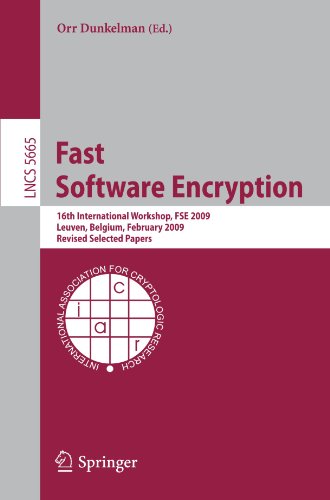

Most ebook files are in PDF format, so you can easily read them using various software such as Foxit Reader or directly on the Google Chrome browser.
Some ebook files are released by publishers in other formats such as .awz, .mobi, .epub, .fb2, etc. You may need to install specific software to read these formats on mobile/PC, such as Calibre.
Please read the tutorial at this link. https://ebooknice.com/page/post?id=faq
We offer FREE conversion to the popular formats you request; however, this may take some time. Therefore, right after payment, please email us, and we will try to provide the service as quickly as possible.
For some exceptional file formats or broken links (if any), please refrain from opening any disputes. Instead, email us first, and we will try to assist within a maximum of 6 hours.
EbookNice Team

Status:
Available4.8
13 reviews(Ebook) Fast Software Encryption 1st Edition by Jean Philippe Aumasson, Itai Dinur, Willi Meier, Adi Shamir, Orr Dunkelman - Ebook PDF Instant Download/Delivery: 9783642033162 ,3642033164
Full download (Ebook) Fast Software Encryption 1st Edition after payment

Product details:
ISBN 10: 3642033164
ISBN 13: 9783642033162
Author: Jean Philippe Aumasson, Itai Dinur, Willi Meier, Adi Shamir, Orr Dunkelman
(Ebook) Fast Software Encryption 1st Edition Table of contents:
People also search for (Ebook) Fast Software Encryption 1st Edition:
rsa encryption software
encryption software reddit
encryption speed
encryption software for usb drives
usb encryption software free
Tags: Jean Philippe Aumasson, Itai Dinur, Willi Meier, Adi Shamir, Orr Dunkelman, Fast Software Encryption